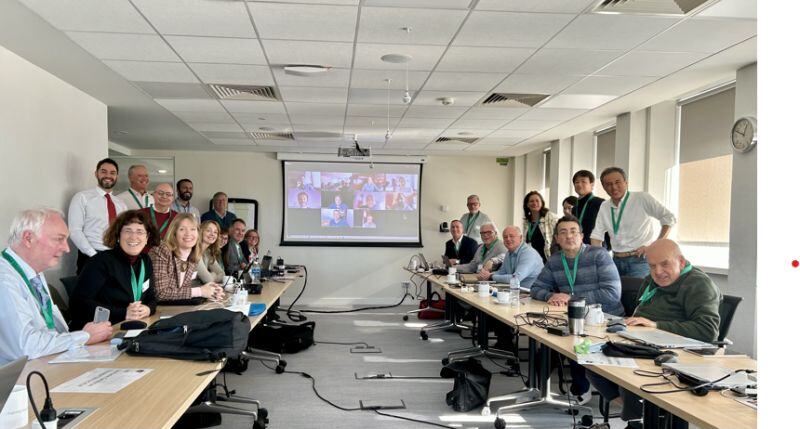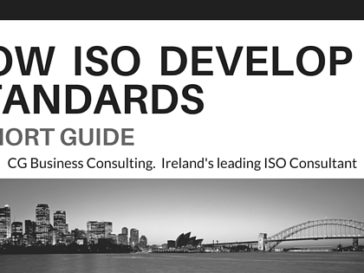An ISO Standard - How Is It Developed?
The International Standards Organisation explains how they develop a new ISO standard An ISO standard is developed by a panel of experts, within a ...

Introduction
Early in my career, when I was the company representative for the certifications my organisation held, I didn’t give much thought to how the standards were actually written. I was busy, making sure our certification cycles were on track and that our management systems were working as they should be, helping us to manage organisational risk in a balanced and proportionate way. Of course, there’s nothing wrong with being focused on managing a system, but I do wonder how many of us actually think about how standards are brought into fruition.
How are standards written?
Anyone can apply to their national standards body to suggest a new standard. If you have a need that you think could met by a standard that would also benefit the wider world, then you can raise this with NSAI, or whomever your standards body is in your country. If they think your idea is worth pursuing, they will raise a new working item proposal (NWIP) locally or with ISO at an international level and, if this is approved, it will be allocated to a committee to write and develop the draft.
Who writes them?
If an NWIP is accepted in principle, it will go through a voting process for approval and, once the green light is given, writing can start. Quite often there is a call for experts if existing committee members do not have the required specialist knowledge or experience. Experts are allocated to a working group and draft 0 can begin. The new standard will go through a number of iterations before it is finally edited by a team of professional editors at the national standards body or at ISO, depending on who is responsible for the final document.
How do they go from draft 0 to publication?
The technical committee convenor organises the first draft, either producing it themselves, or by appointing a project lead who is responsible for writing it. Equally, the technical committee may be split into working groups who divide the text up between them, working on a clause or number of subclauses each. When the text is brought together, it becomes a Committee Draft, or CD. The draft is then circulated for comments. At ISO level, comments from all participating countries are collated ready for comment resolution, which involves gaining agreement on which parts of the text should change, and which should remain the same. Circulation for comments and comment resolution is an iterative process and there can be several cycles. When the final text is agreed this becomes a Final Draft International Standard or FDIS. The FDIS will then go through an editorial process before it is published as the final standard.
How do standards get updated?
Standards are updated every seven years on average. Updates to standards happen in much the same way as drafting a new standard, only before any writing begins, there will be some discussion on the technical committee as to how much change is needed. Some standards will require a few tweaks, and others will need extensive revision or a complete re-write. If a standard becomes obsolete, it will be withdrawn. I was invited to be a contributor to both national and international committees responsible for standards on risk. My involvement with technical committee TC262 at ISO, responsible for ISO 31000, the standard for principles and guidelines of risk management, has now reached a ten-year milestone and I am currently on my second revision of this standard. It is always interesting to see how the subject matter evolves, how thinking changes and how that is reflected in the language we use.
 Meeting of TC 262, London, October 2024, for the re-write of ISO 31000
Meeting of TC 262, London, October 2024, for the re-write of ISO 31000
Check out the lifecycle at ISO.org
To understand where a standard is currently in its lifecycle, you can check the ISO website or contact your national standards body for information. It is good to be aware of when a standard will change so that you are ready and prepared in case you need to update a system as a result.
Summary
Standards affect our lives every day but few of us wonder how they are written or published. The process for writing standards involves many experts and a team of administrators and editors to bring the final document into being. The process for writing drafts and refining the wording is highly trusted and has been proven to be effective. For more information about being involved in writing standards or understanding where a standard is in its lifecycle, contact your national standards body or check the ISO website.
Vanessa Harrison

The International Standards Organisation explains how they develop a new ISO standard An ISO standard is developed by a panel of experts, within a ...

International Standards bring technological, economic and societal benefits. They help to harmonize technical specifications of products and...

Communing with nature is a wonderful thing. And a natural element of any progressive environmental or green strategy. So is implementing an EMS....